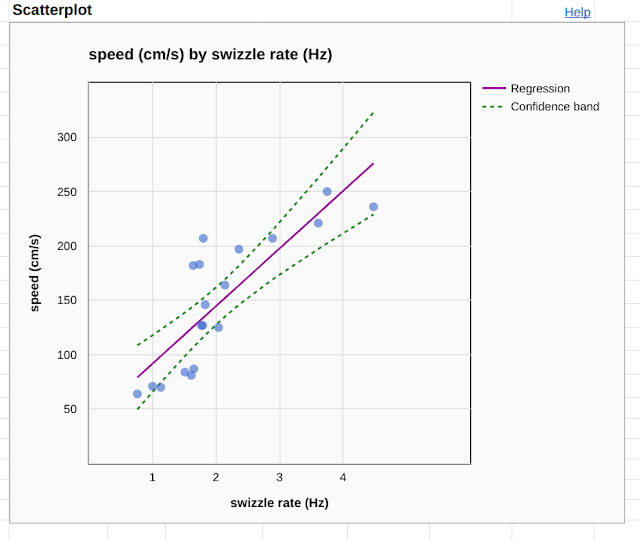Graphical confidence intervals for a linear regression in Google Sheets

For a brief period of time Google Sheets had a Statistics add-in which generated graphs of regressions lines and 95% confidence intervals for the regression line graphically. The graph above provided a visual approach to whether a slope could possibly be zero. A possible slope of zero would leave open the possibility of no relationship between the variables. The Statistics add-on was credited to "Google Developers" and was eventually removed as an add-in. Google lost a number of capabilities with this deletion, including boxplots. The LINEST array function available in Google Sheets since 2016 , when configured to do so, will provide the information necessary to calculate the 95% confidence interval for the slope and the intercept. This provides a numeric answer to whether a slope could be zero, is more precise than a chart, and yet is less visually satisfying. The above analysis show that a slope of zero is possible and that the negative slope is not necessaril






